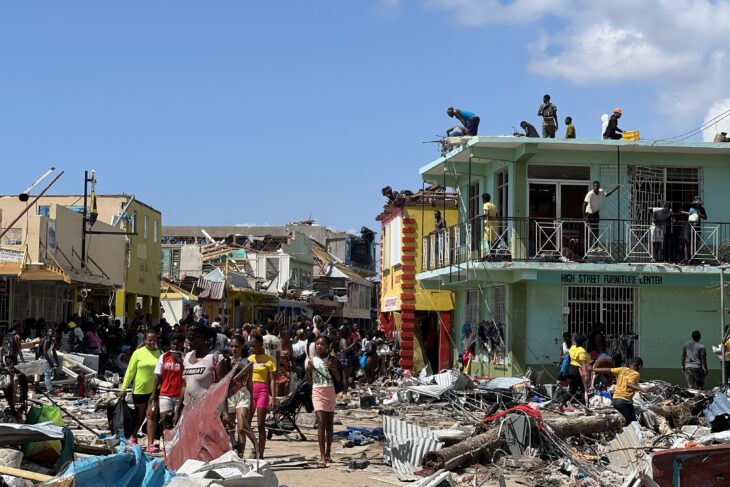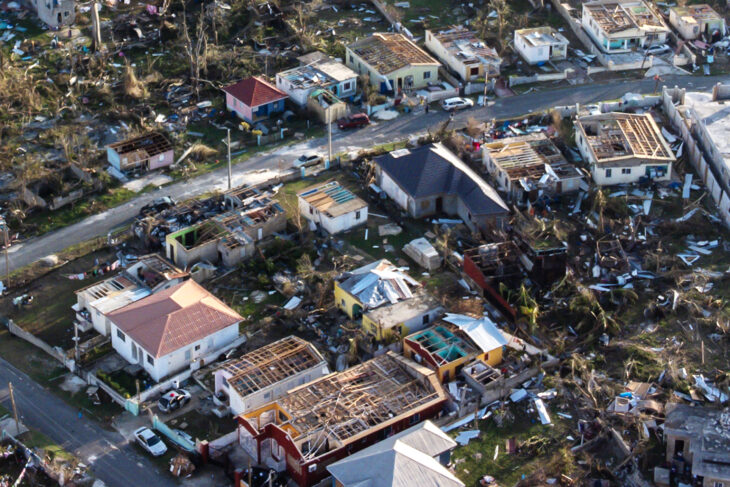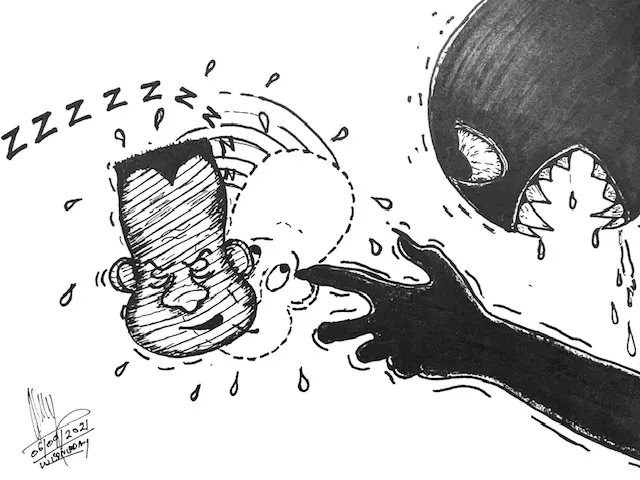A well-researched diary of a natural disaster is an essential tool at this time, but in various parts.
Firstly there is a need to deal with the conditions precedent and conducive to the formation of hurricanes, and predictive of earthquakes. This is a longer-term body of scientific research, data collection, satellite imagery, land and sea sonar technology, and an agreed protocol for sharing information across national and political borders. This requires a basic agreement that the Earth matters to all, and whether climate change is man-made or naturally cyclical, there are dangers that impact our survival.
Secondly, there is the concept of advance preparation in the face of impending dangers like hurricanes, winter storms, heat waves, cold spells, floods, and droughts. We know that these events will occur and therefore there is no excuse for a failure to plan accordingly. For us in the Caribbean that simply means drain cleaning; bushing; enforcing building standards and location of buildings (zoning and squatting); electrical standards; road inspection; bridge maintenance; waste disposal; evacuation; and secure shelters. This is a non-partisan activity (yes, Tivoli Gardens, Trench Town, and Rema can share a properly constructed shelter).
Thirdly, there is the action plan for the aftermath of an event that requires immediate operationalization of pre-planned relief efforts that cross national borders. Based on the fragility of the Caribbean, Central America, and the southern United States, the relief efforts become regional and hemispheric with particular regard to hurricanes, earthquakes, and volcanic eruptions.
It is with the third that I am particularly concerned and recent events have prompted me to raise these concerns. I confess that this will be my final attempt as I have addressed solutions at the following: Caricom heads of Government; CLAA Miami Conference; US Department of Commerce; US Embassy in Jamaica; Caribbean Association of Industry and Commerce; and numerous public speaking opportunities in Jamaica and CARICOM.
I have (with permission) shared the detailed GraceKennedy Disaster Preparedness Plan with every CARICOM government and Chamber of Commerce in the region (including Martinique, Guadeloupe, St Maarten; BVI; USVI; DR; and Haiti) in 2006. I therefore feel that I have gone the extra mile and, like Forest Gump, I am stopping my running.
The following are some of my last steps of that journey.
• As Hurricane Harvey was approaching I consulted my UWI specialists who were watching it from it left the coast of Africa. They informed me of its major potential long before it was a named storm. They also advised me of the potential deterioration before passing south of Jamaica.
• I reviewed the sea temperatures and in a very amateur way deduced it would reform and threaten the USA. So that was Texas. I wrote an article alerting readers to the potential negative impacts of the storm on US insurances for wind damage and flooding and the international re-insurance industry; also the interruption of shipping schedules; impacts on oil prices and our own inflation agenda; and the interruptions in tourism among others.
• Then Irma (the mother of all hurricanes) slowly developed into the largest hurricane I have ever witnessed or heard of. Moving slowly and developing strength to a Category 5 certainly set my nerves on edge. So on September 1 I called the head of disaster preparedness at GraceKennedy and she had everything under superb control.
• On September 4, I made contact with the US Embassy and asked to discuss the question of relief with them. On Tuesday, September 5 I was invited to a meeting scheduled for Friday, September 8. That meeting allowed a full discussion of post-hurricane relief and a suggestion of a Regional Response Strategy (just a 2006 update).
• On September 4, the CEO and medical chief of staff of the University Hospital of the West Indies (UHWI) put in place the first meeting of their disaster plan. On September 5 they held the second meeting to identify any areas of concern or shortages to inform the Ministry of Health (MOH). On September 6 I joined their third meeting to discuss additional preparations to support regional medical assistance at the UHWI and in the event of the need for relief medical missions to other Caribbean destinations affected by Irma.
On Thursday, September 7 we updated the Minister, Permanent Secretary, and Chief Medical Officer in the MOH of our status in preparing.
• I established contact with friends and Ministers in St Kitts, and friends in St Maarten. We kept in touch during and after their ordeal. St Maarten had no internal communications capabilities and I found that I was able to help by giving my friends information when Hurricane Jose approached while their information was very limited. This was possible largely through WhatsApp.
• On September 7 I made contact with our Minister of Local Government to remind him of preparation agreements signed in 1992 with his ministry that allowed relief supplies to be put in place, prior to an event, with the Red Cross and the Salvation Army across the island. I also called Minister Ed Bartlett to make a recommendation on a strategy for cruise shipping, but I was unable to reach him.
• On September 8 I made contact with the JPS to remind them of previous events in the USA that required Caribbean and Central American linemen to restore downed power lines in the region and Florida.
• On September 8 I made contact with the construction industry to alert them of the impending opportunities for re-construction, and urging them to prepare a plan that could be executed swiftly, ahead of the Chinese.
• On September 8 I called my friend Ralston Hyman to ask what the effect on the price of sugar would be if Lake Okeechobee overflowed or rain flooded Belle Glades (one of the USA’s main cane-growing areas).
• Then I spent Friday evening, Saturday, and Sunday communicating with my family and friends in South Florida prior to, during, and after the passage of Irma. Happily all were well prepared and the sales of hard dough bread, corned beef and mackerel went up. Yes, Jamaicans don’t rely on KFC and McDonald’s.
So for one more time I will share my recommendations and the reasons for them.
After a hurricane, earthquake or volcanic eruption, access to airports are either restricted or impossible. In addition the quantity of relief food supplies is extremely inadequate by air transportation. The only efficient use of air transportation is for medical supplies.
Relief workers become useless if they have no respite from the disaster conditions and after a few days of being left on the ground they tend to resemble the victims rather than the rescuers. This was really evident in Grenada and New Orleans as they further strain the supply chain.
In most events power is down, potable water is non-existent, sewage forms a part of the environment, and communications are disrupted. Therefore relief workers need a place to assemble individual relief supplies from bulk containers (essential in mountainous terrain), to have a shower, a meal, and a night’s sleep. In order to keep up with their daily tasks they need a platform to operate from.
The only answer is a ship. It must follow the course of a hurricane and be able to be in place within 24 hours or less following the impact. In the case of an earthquake or volcanic eruption then the timeframe may be extended. Such a vessel needs to be pre-loaded with supplies such as non-perishables and water; excess sleeping quarters for relief volunteers; a helipad for transferring volunteers; and when not in full service to be utilized by the Caribbean Maritime University as a training and education vessel.
The relevance of this is well understood by Small Island Developing States, and most of Central America. The small-minded think that they will lose control of scarce benefits and spoils that build political points. But why should the USA be interested in supporting this?
The answer to that just needs a few words like Andrew; David; Katrina; Hattie, Harvey, and Irma. It is not in any way dissimilar to our agreements on sea and border security, drug trafficking, or trade and travel. It just needs execution. It needs experienced personnel from electricity to water, and a methodology to get them to a sheltered area like Trinidad at the starting point for the emergency. Others can join as the vessel moves through the region towards the emergency.
This is not a great political hurdle for the USA compared with terrorism, North Korea, or proliferation of nuclear weapons of mass destruction. This is a simple one that does not even require an understanding or belief in climate change. It seems clear that FEMA may be challenged by greater concerns; or perhaps they weren’t aware of two nuclear plants that, in light of Irma, may have been built too close to the coastline.
As I began, this is my final attempt at free advice. I have tried for over 12 years to sensitize and protect our nation and region. Beware: all who enter herein, be sure to bring cash (and lots of it). T.Y. Hilton Womens Jersey



